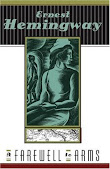I really liked the technologies I explored for my personal technology project. In the teaching that I've done (I'm a Writing Fellow, so I do a lot of tutoring students with their writing) I think the thing I've struggled the most with is helping people organize their writing. We teach writing by outlining, but for a lot of people that really isn't an effective way for them to organize their ideas. I liked mindmeister and the website I found because they really allow the students to individualize their learning and take control of it themselves. I've had students physically cut out their ideas and move them around, but it's so much easier and neater to do it on a program.
I also really like goodreads. I think it's important for English students to see that their teacher enjoys reading recreationally, and doesn't just read Shakespeare and Chaucer. I really want to create a kind of reading community where my students can share recommendations with each other and with me and where my students can see what I've read and enjoyed. I think teaching my students to love reading is one of my biggest responsibilities as an English teacher, and goodreads provides a venue for me to facilitate that.
Personally, I just liked having all of these different technologies I had to learn. It overwhelmed me at times, and some of them I probably won't ever use (I despise video conferencing/comments and I think I always will) but it was really good for me to just try until I figured them out. I think I gained a lot of confidence in working with technologies and that will help me a lot. Technology changes so quickly that confidence that you can figure new things out is much more important than actually mastering one specific technology, I think.
Transition Year English Evening 2025
4 months ago




